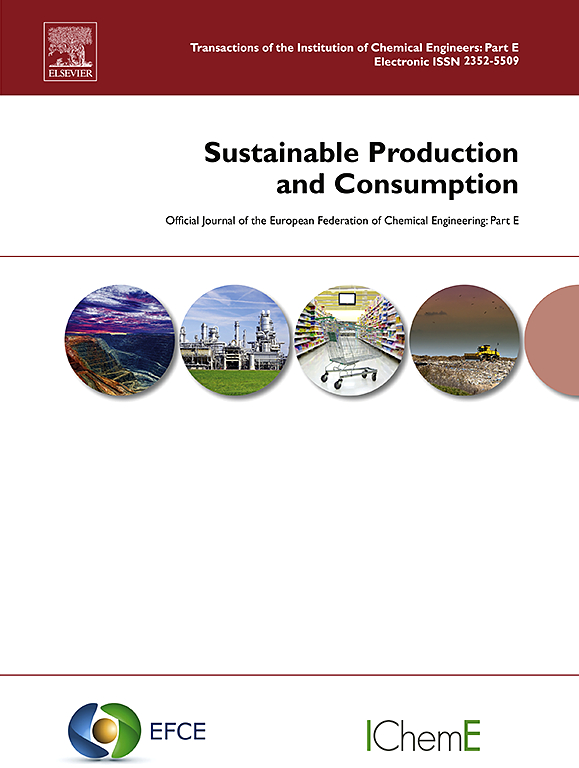A life cycle assessment study of UK decarbonised ammonia, cement, methanol and steel for emission insetting
IF 10.9
1区 环境科学与生态学
Q1 ENVIRONMENTAL STUDIES
引用次数: 0
Abstract
Many corporations are moving away from emission offsetting to reach net zero and are instead pledging to be net zero by decarbonising their own operations and activities in addition to their supply chains. When actions are taken within a supply chain to reduce greenhouse gas emissions they are referred to as emission “insets” or “insetting”. Insetting is a relatively new mechanism for company and corporate decarbonisation but there is already controversy on whether it can be effective in delivering net zero goals. For the first time, this study applies life cycle assessment and life cycle thinking to map out the supply chains of a multistorey building, fertiliser and dyed yarn production to determine what emission reductions are achievable when the supply chains of cement, steel, ammonia and methanol are decarbonised. The results indicate that greenhouse gas emission reductions can be significant with reductions of up to 17 %. Prospective life cycle assessment was applied to determine the impact of deeper decarbonisation in the supply chain, but this was found to have a limited impact with emission reductions increasing by an additional 0.12 to 8.36 %. Overall, insetting will lead to emission reductions but could cause damage to other areas of the environment including resource depletion and ecotoxicity.

对英国脱碳氨水、水泥、甲醇和钢材进行生命周期评估研究,以减少排放
许多公司正在放弃抵消排放以达到净零排放,而是承诺通过除供应链外的自身运营和活动脱碳来实现净零排放。当在供应链内采取行动以减少温室气体排放时,它们被称为排放“插入”或“插入”。对于公司和企业来说,这是一个相对较新的脱碳机制,但它是否能有效实现净零排放目标,已经存在争议。本研究首次应用生命周期评估和生命周期思维来绘制多层建筑、化肥和染色纱生产的供应链,以确定当水泥、钢铁、氨和甲醇的供应链脱碳时,可以实现哪些减排。结果表明,温室气体减排可以显著减少高达17%。应用前瞻性生命周期评估来确定供应链中深度脱碳的影响,但发现其影响有限,减排量增加了0.12%至8.36%。总体而言,投资将导致排放减少,但可能对环境的其他领域造成损害,包括资源枯竭和生态毒性。
本文章由计算机程序翻译,如有差异,请以英文原文为准。
求助全文
约1分钟内获得全文
求助全文
来源期刊

Sustainable Production and Consumption
Environmental Science-Environmental Engineering
CiteScore
17.40
自引率
7.40%
发文量
389
审稿时长
13 days
期刊介绍:
Sustainable production and consumption refers to the production and utilization of goods and services in a way that benefits society, is economically viable, and has minimal environmental impact throughout its entire lifespan. Our journal is dedicated to publishing top-notch interdisciplinary research and practical studies in this emerging field. We take a distinctive approach by examining the interplay between technology, consumption patterns, and policy to identify sustainable solutions for both production and consumption systems.
 求助内容:
求助内容: 应助结果提醒方式:
应助结果提醒方式:


